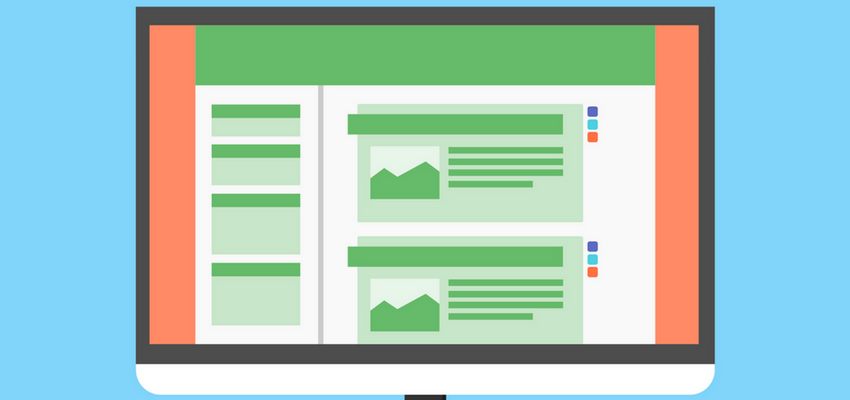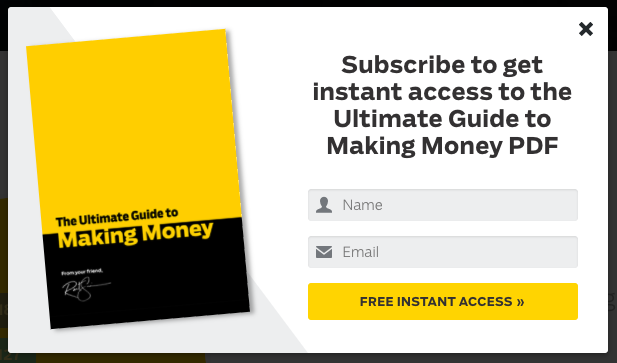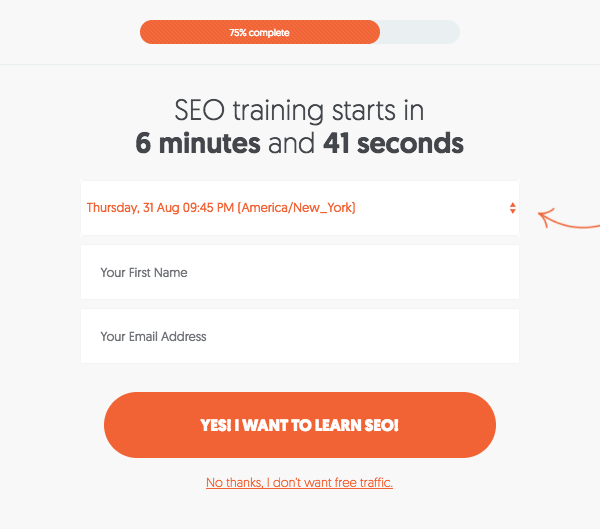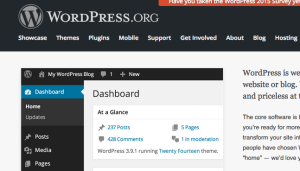
Blogging is competitive, like insanely competitive. To be a successful blogger, you need to act like a pro and stop making beginner blogger mistakes.
I get it. I used to be new to this space back in early 2015 and there’s a huge learning curve. But learn I did.
With over 500,000 views on Take Your Success in less than 3 years and leveraging my blog to profit $10,000 income months, there’s not a doubt in my mind now that I’m a professional blogger.
But if you’ve learned how to set up a blog, and now you’re going to join me as a professional blogger, you can’t mess around making silly mistakes.
Though you should still enjoy the topics you write, you need to raise your game if you’re going to make a push in a saturated market like blogging. Because readers (and top bloggers) are smart enough to know who is for real and who doesn’t have their act together.
If you want to climb the ranks, here are 11 mistakes that amateur bloggers need to give up to improve their blog.
Amateur Blogger Mistakes
1. Your domain name isn’t professional.
Professional domains don’t look like this: yoursite.wordpress.com.
If you don’t want to be a pro blogger then don’t heed this advice. But if you do…Stop being so cheap (it’s like $4 a month to have your own domain and hosting). Step into the big league’s. And buy a professional domain name and hosting that doesn’t have a company’s name in your site’s link.
If you start out self-hosting your blog through a company like Bluehost (who hosts my blog and I’m an affiliate for), then your blog will start out professional on Day 1. You can use their 1-click WordPress install and have your site set up in minutes.
Having your own domain name goes a long way in building your online brand.
2. Your blog’s topics are all over the place.
Beginner bloggers make the mistake of not knowing themselves and the message they want to communicate to the world. So they brain dump everything and anything that comes to their mind.
The problem is their audience gets confused. And it’s hard to build a successful blog when your audience doesn’t understand what topics to expect from you.
If one minute it looks like you’re going for a celebrity gossip blog and the next minute you’re striving to be a model, you have an issue. Get it straight. Do you want to be Perez Hilton or Paris Hilton?
Veteran bloggers know their sweet spot topic and stick to their niche for the most part. Occasionally they might dive into other topics, but their audience doesn’t think they’re bipolar.
Like don’t take this literal and think a personal finance blogger can only talk about money and they’re not allowed to talk politics, fitness, or social opinions (which money plays in a role in those other topics).
The point is 75% of your content should cover the main topic and every once in awhile cover a different topic that has some application to money. Use proper discernment here and don’t be an idiot.
3. Your writing voice has no personality.
The problem with most English classes from middle school to high school to college is their teaching focuses on spelling and grammar usage, but not your writing voice.
So many newbie bloggers think they need to write all professional and formal to sound smart. This couldn’t be a worse approach!
Your writing voice is your personal style that makes you unique. Ideally, your voice is so present that the reader can not see your name at the top of the article but know it’s you writing it based on the way you put words together. People will be drawn to a unique voice.
Professionals know themselves, their voice, and think about their readers. They ask themselves questions like what’s an entertaining way to right this? Or how would I tell this story if I was at a cocktail party? That’s why it sticks with the reader.
It’s far better to write like you talk. Because a mix of information and entertainment always beats just information alone.
Aim to always include some personality in your writing if you want to resonate with people.
4. Your permalink structure is not optimized for SEO.
A permalink is a link to a specific page or post on your site. For example, the permalink of this individual blog post is:
takeyoursuccess.com/amateur-blogging-mistakes
My permalink structure is correct, you better believe it.
But beginners will have permalinks looking like this:
takeyoursuccess.com/?p=6140&=xhe$!opdw2
To fix your permalinks, go to the WordPress admin page of your site and follow these instructions:
- Hover over “Settings”
- Click “Permalinks”
- Select “Post name”
- Click “Save Changes”
Recently I’ve seen WordPress get smart and make the default permalink the correct one. But if you have an older WordPress or different website provider, check your permalink structure to ensure that it shows the post title (or you can edit it for keywords).
When your permalinks don’t look foolish, you’ll get more organic traffic this way and keep them coming back.
5. Your layout is disorganized.

I get it because those new to the blogging world often don’t have a ton of cash in their bank account to spend on a nice blog design.
But blogs are more like magazines than ever before. Like magazines, blogs need to be regimented and visually appealing. Every piece of land on your site needs to have a specific purpose, with nothing on there just for the heck of it.
You need to have specific sections without overwhelming the eyes of anyone who opens up your home page, a navigation menu page, or an individual article page.
Humans like order; we don’t like feeling we have to dig through a layout and a thousand and one ads just to view the post we want to see.
Your pageviews will soar when you make it easier for your audience to navigate to different links.
Keep it simple and functional for best results.
6. Your article formatting is horrible.
Newbie bloggers will write their entire post in normal text and have 5 to 7 sentences in each paragraph like they’re writing a high school research paper.
This is not cool for blogging because your readers are busy people. Sometimes they don’t have time to read the entire article so they want to skim past 60% of it.
Readers prefer easy to digest content (and the longer they stay on your site the better your SEO gets).
The big kid bloggers get this and format their articles differently.
Here’s the way to properly format a blog post for both your readers and SEO purposes:
- Use Heading 1 (H1) only once on the page for the page title
- Use H2 to break your page down into a summarized outline
- Use H3 for the subheadings in the H2, most often used for lists or use normal text in bold font to make lists
- Ignore using a H4, H5, or H6
- Write 1 to 2 sentence paragraphs then hit enter and space down to the next paragraph
- Include links to internal posts and external sites, pictures, charts, and sometimes videos if applicable
Ironically, outlining your blog posts in a nice format will help you write a better post. I’m telling you it pays to do things right!
7. You haven’t written an About page.
Surprising to many, the most frequently visited page on a lot of sites is not the Home page or the Blog page. It’s the About page.
Who for sure knows why, but I have an idea. People are inherently interested in other people. They want to know the name, face, and life story of the person behind the site. So give it to them!
If you’re not comfortable putting your individual self in the mix of your blog posts, you need to do that for your About page.
But it’s too common for beginners to have no About page or an awful one that doesn’t do their readers or them any justice.
Top bloggers use the About page to communicate how they will help their reader, what the reader has to gain from sticking around this site, and who they are as individuals. Check out this Copyblogger article to learn how to get the most out of your About page.
8. Your images are poor quality or you don’t have any.
Blogging may have begun as a solely text-based hobby, but we’ve come a long way from those days. You’d for sure admit that only the most old-fashioned of bloggers ignore the fact they need images to help break up text and make their blog look prettier.
And we can’t forget the phrase “a picture is worth a thousand words.” Some blog post concepts are hard to explain without an image, graph, or chart to aid the reader’s understanding.
However it’s not just about having images and calling it a day. The quality of those images is extremely important and you can’t sleep on that.
If you’re serious about making a profession out of blogging, then stock image sites can boost the professionalism of your website. (In case it helps you, my favorite site in that list is Pixabay.)
9. You don’t have a mailing list.
If you have a blog, then you should have a mailing list. It’s that black and white! No excuses.
A mailing list offers these benefits for your blogging career and much more:
- Build a personal relationship with your audience
- Your site will gain more traffic when you email a new blog post
- Grow a list of fans and ready buyers who are opting in to receive more from you
- You own the customer contact information (not the case with social media followers)
Just like investing in the stock market, the earlier you start your mailing list the better the return. Sign up for Mailchimp (it’s free), add a form to your site, and start collecting sign ups.
Also, make asks at the end of your articles for readers to join your email list. Give a guide away for free in exchange for an email address. And don’t be afraid to promote your site on social media to gain more email subscribers.
Then email this list once a week to send them new articles, ask them what content they want to see, offer to help people who respond with a question, and pitch your products or services when you offer them.
Like the saying goes, “You only get what you ask for,” and this applies to growing an email list.
The A-list bloggers are always pushing email signups, why not you?



10. Your articles have several spelling and grammatical errors.
If you misspell a word once every few blog posts, no one with a life is going to care. After all, Harry Potter books have had plenty of mistakes in them and that didn’t stop them from generating millions of dollars. (You think JK Rowling tosses and turns at night because her fans caught errors? Not a chance bro.)
But if every article you publish is drowning with errors then people will leave your blog and not come back. That’s when it’s a problem.
Write with sound grammar that’s easy to understand. Know the differences in those words like their, there, and they’re. And be a professional by spending the extra 10 minutes to reread your post before you click publish.
Whether you believe it or not, spelling and grammar makes a difference in your audience’s experience. I’m not asking for perfection here, just really solid quality.
11. Your website has no favicon.
It’s the little details that matter. The first thing I look at when visiting a new site is their favicon (or lack thereof).
If you’re not familiar with this term, the favicon is the 16×16 pixel icon that shows up to the left of the site name in a bookmark list or on your browser’s address bar.
Check out the image below to see what the TYS and ESPN favicon look like.
![]()
Professional bloggers have their site’s logo, an image, or text that represents their site’s brand. Beginner bloggers don’t have a favicon so the browser will show the hosting provider’s logo or a default gray, blank piece of paper as the icon. (Lame!)
Adding a favicon is an easy fix to put a nice touch on the presentation of your blog. Go to this site and either upload an image for them to resize it down or make your own favicon with the on-screen tools.
Then add a plugin like Favicon by Real Favicon Generator or name your favicon file favicon.ico and add it into your website’s root folder or your public_htmlfolder (on WordPress). Refresh your site and you’ll see it immediately if you did it right.
Look Like A Pro Blogger
Your blog could have 6 views a day, 3 email subscribers, and have generated $0 thus far, but that shouldn’t stop you from presenting yourself as a professional blogger.
Why wait a year to start putting in the work the expert bloggers put in on a consistent basis?
I encourage you to do the opposite of the 11 common beginner blogger mistakes above. This way you will more quickly provide value and grow a fan base around your work.
Here’s what professional bloggers do and how you can mimic them to improve:
- Their domain name is smooth.
- Their blog covers a specific topic with a clear ideal audience.
- Their writing voice is unique, fun, and interesting to read.
- Their site’s permalink structure contains SEO keywords.
- Their blog’s layout is clean and easy for the visitor to navigate.
- Their article formatting makes reading more convenient.
- Their About page tells the reader the purpose of the blog, who they are, and their story.
- Their images are high-quality to improve the user experience.
- Their mailing list is present and a key feature of their site.
- Their articles have minimal spelling and grammatical errors.
- Their favicon is slick.
The earlier you say goodbye to the amateur blogger ways and pick up skills from the pros, the quicker you’ll get paid for the value you provide.
And what’s getting paid for your blog mean? You officially get promoted to professional blogger status.
But to get there you have to first fake it until you make it, or you might never make it in the ultra-competitive world of blogging.
Related: How To Make Money From Blogging

